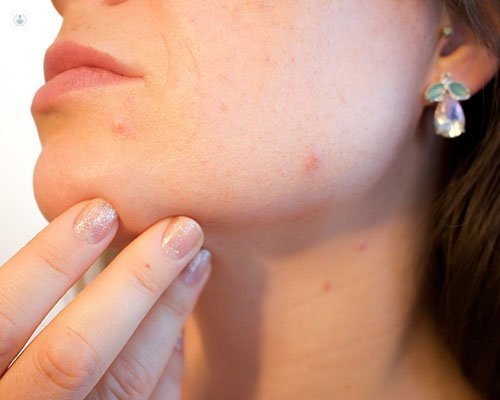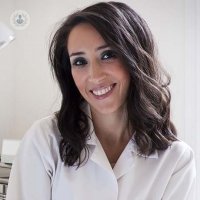Myths and Facts About Acne
Written by:Acne vulgaris is one of the most frequent reasons for consultation in Dermatology. It is a condition that affects almost universally, to a lesser or greater degree, adolescents and young adults. However, contrary to what many think, is not a disease at all uncommon in patients older than 25 years, since up to 40% of men and 55% of women have acne outbreaks. It is what we call adult acne.
Causes the appearance of acne
Acne is a process that is located in the hair follicle and which is caused by the interaction of four main factors: Local excess fat secretion, plug formation obstructing the follicle, colonization by Propionibacterium acnes bacteria and occurrence of inflammation.
The appearance of acne lesions is due to increased formation of sebum due to stimulation of the sebaceous gland, which in turn is explained by the increased production of androgens (male hormones) that occurs during puberty. Therefore, acne is very common during adolescence.

In girls the first cystic acne one year may start appearing before menarche. In boys usually starts a little later, around age 14, but usually lasts until 18-19 years.
However, particularly in women, acne can persist (persistent acne) or appear for the first time (late onset acne) from 25 years. This type of acne in adulthood may be associated with certain syndromes, such as Polycystic Ovary Syndrome (PCOS), which agree rule.
On the other hand, adult acne can be triggered or worsened by several factors: genetic predisposition, stress, fatigue, smoking, improper use of cosmetics or during the menstrual period. Clinically, usually predominates the presence of inflammatory lesions, often profound, especially in the lower third of the face and the face (chin and jaw area) "U".
Acne Treatment
Although acne is not (in most cases) a serious pathology, yes often it has a major impact on self - esteem and psychological well - being of the patient who suffers. In addition, certain injuries tend to leave unsightly marks or scars on the skin that are often difficult to remove. Fortunately, today we have effective treatments that control outbreaks and hide the marks.
There are topical treatments (creams), hormonal treatments, antibiotics, derivatives of vitamin A (Roaccutane) and chemical peels. In each case we explain what treatment options exist and see what is the most suitable. Many times we must combine several treatments or use a different dose to the usual. In addition, it is necessary to daily care tips and guidance on the proper use of cosmetics. We seek not only control acne, but to achieve beautiful skin.
Myths and Facts About Acne
Being a very common condition , there are many popular myths about acne. Let's clarify some of them.
- "Milk, chocolate, fried sausages and produce acne". Regarding the influence of diet on acne and there has been much controversy. What finally seems certain is that foods with high glycemic index (refined carbohydrates that are rapidly absorbed when ingested by stimulating insulin release) probably does make acne worse, especially in girls and especially if they are overweight.
- "Stress worsens acne." In some cases it is true. Stress is a nervous stimulus that occurs in the cerebral cortex, which also governs hormone secretion. By stimulating the pituitary gland can end up causing a worsening of injuries.
- "The toothpaste and sun are good for dry beans". There are specific marketed to dry the grain products and does not make sense to use toothpaste because it can produce much more irritation. Having basked can give the feeling that the beans are dried but it is very usual for a subsequent regrowth and even acne worse.
- "Exploited pimples make them go away before". totally false. When handling acne lesions we can generate more inflammation and even to sequels and brands that otherwise would not appear.
- "Putting on makeup or sunscreen applied makes out more grains". It does not have. If a non-comedogenic makeup or oil-free photoresist, ie, not containing chemicals that obstruct the pilosebaceous follicle, not worsen acne is used.
- " It is good to wash your face frequently to improve acne . " It is advisable to wash your face with a specific cleaning product acneicas skins twice daily (morning and evening). Too much cleaning can irritate the skin and even worsen acne lesions.
- "We need to be expensive cleanups beauty centers". In inflammatory acne it is not recommended because the manipulation for cleaning injuries can worsen. In acnes comedogenic (where blacks predominate points) could help clean but there are other more effective alternatives to improve them.



